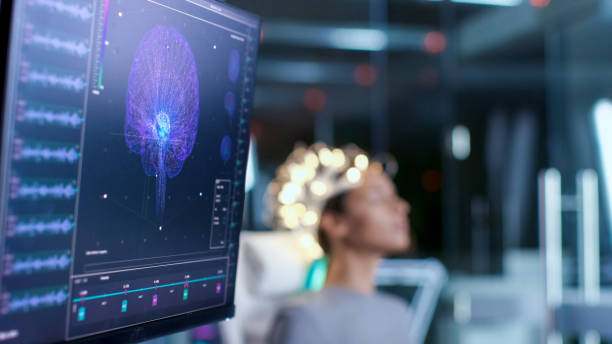Neuroaesthetics: The Science of Beauty Perception
Our brains are wired to appreciate beauty, but what exactly happens when we encounter something visually pleasing? The emerging field of neuroaesthetics seeks to answer this question by exploring the neural processes behind our perception of beauty. This fascinating intersection of neuroscience and aesthetics is reshaping our understanding of why certain features, artworks, or landscapes captivate us. By delving into the brain's response to beauty, researchers are uncovering insights that could revolutionize industries from art and design to cosmetics and plastic surgery. Let's explore the cutting-edge world of neuroaesthetics and its profound implications for how we perceive and create beauty.

As technology advanced, particularly with the development of functional magnetic resonance imaging (fMRI), researchers gained unprecedented access to the living brain’s responses to visual stimuli. This allowed scientists to map the neural correlates of aesthetic experiences, identifying which brain regions activate when we perceive something as beautiful.
The Neural Basis of Beauty
Studies in neuroaesthetics have revealed that our appreciation of beauty involves a complex network of brain regions. When we encounter something we find aesthetically pleasing, several key areas light up:
-
The visual cortex, responsible for processing visual information
-
The orbitofrontal cortex, involved in decision-making and reward processing
-
The anterior insula, associated with emotional experiences
-
The anterior cingulate cortex, linked to attention and motivation
Interestingly, these regions overlap significantly with the brain’s reward system, suggesting that experiencing beauty is inherently pleasurable and motivating. This neurological response helps explain why humans are drawn to beautiful things and why aesthetics play such a crucial role in our lives.
Universal Beauty Standards
One of the most intriguing findings in neuroaesthetics is the existence of certain universal beauty standards. Despite cultural differences, some features consistently activate the brain’s aesthetic centers across diverse populations. For example:
-
Symmetry in faces and bodies
-
Certain proportions, such as the golden ratio
-
Smooth skin texture and clear complexion
-
Vibrant colors in nature and art
These universal preferences likely have evolutionary roots, as they often signal health, fertility, or environmental safety. Understanding these innate aesthetic biases can inform everything from product design to urban planning, helping create environments and objects that resonate with our neurological predispositions.
Individual Variations in Beauty Perception
While universal standards exist, neuroaesthetics also reveals significant individual variations in beauty perception. Factors such as personal experiences, cultural background, and even genetics can influence how our brains respond to aesthetic stimuli. For instance, studies have shown that art experts and novices have different neural responses when viewing artworks, with experts showing greater activation in areas associated with reward and decision-making.
This individual variability highlights the complexity of aesthetic experiences and challenges the notion of objective beauty. It also opens up exciting possibilities for personalized approaches in fields like cosmetics and fashion, where understanding individual aesthetic preferences could lead to more tailored products and services.
Implications for the Beauty Industry
The insights from neuroaesthetics are beginning to transform the beauty industry. Cosmetic companies are now using brain imaging techniques to test the effectiveness of their products, measuring neural responses to different formulations or packaging designs. This approach, sometimes called “neuromarketing,” allows for more precise targeting of consumer preferences.
Moreover, understanding the neural basis of beauty perception is influencing product development. For example, some skincare lines are now formulated to enhance skin qualities that trigger positive neural responses, such as smoothness and radiance. Similarly, makeup products are being designed to accentuate facial features that align with neurologically-based beauty standards, like symmetry and proportion.
The Future of Neuroaesthetics in Fitness and Wellness
The application of neuroaesthetics extends beyond traditional beauty concepts into the realm of fitness and wellness. Researchers are exploring how our brains respond to different body shapes and movements, which could inform new approaches to exercise and body image.
For instance, studies have shown that viewing images of fit bodies activates reward centers in the brain, potentially explaining the motivational power of fitness influencers and advertisements. Understanding these neural responses could help in designing more effective fitness programs and motivational strategies.
Additionally, neuroaesthetic principles are being applied to create more appealing workout environments. Gyms and fitness studios are incorporating design elements that stimulate positive neural responses, such as nature-inspired decor or specific color schemes, to enhance the overall exercise experience.
Ethical Considerations and Criticisms
As with any emerging field, neuroaesthetics faces its share of criticisms and ethical concerns. Some argue that reducing beauty to neural processes oversimplifies a complex and subjective experience. There are also concerns about the potential misuse of neuroaesthetic insights, such as manipulating consumer behavior or reinforcing narrow beauty standards.
Critics also point out that much of the research in neuroaesthetics has focused on Western populations, potentially overlooking cultural variations in beauty perception. Addressing these limitations will be crucial for the field’s continued development and ethical application.
The Beautiful Future of Neuroaesthetics
Neuroaesthetics offers a fascinating window into the biological basis of our aesthetic experiences. By unraveling the neural mechanisms behind beauty perception, this field is not only advancing our scientific understanding but also reshaping industries and challenging our concepts of beauty itself.
As research in neuroaesthetics continues to evolve, we can expect to see more personalized and scientifically-informed approaches to beauty and wellness. From customized skincare regimens based on individual neural responses to fitness programs designed to optimize both physical and aesthetic outcomes, the applications are vast and exciting.
However, as we navigate this new frontier, it’s crucial to balance scientific insights with ethical considerations and respect for individual and cultural diversity. The true beauty of neuroaesthetics lies not just in understanding how we perceive beauty, but in using that knowledge to enrich our lives and expand our appreciation of the diverse forms of beauty that surround us.





